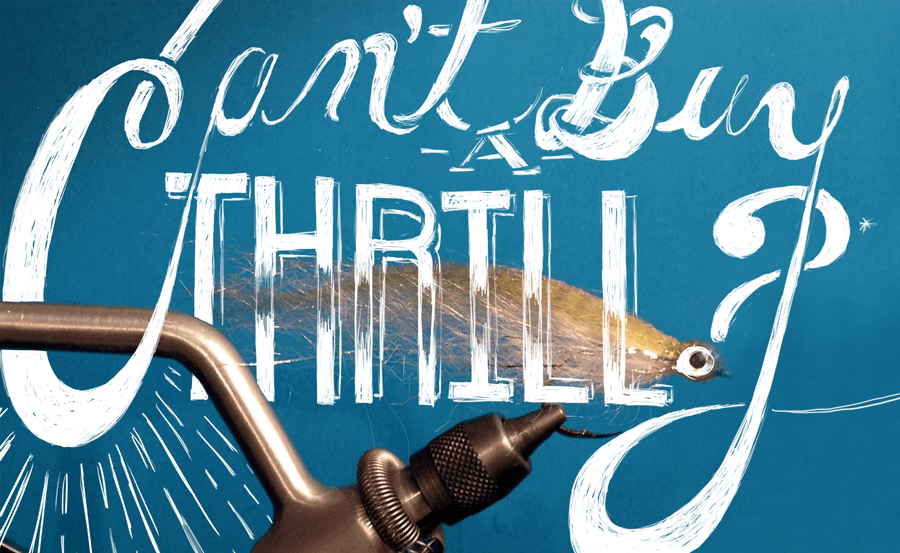Imagine that you’re fishing in an area where you believe fish to be, or even better, that you’re fishing over sighted fish. you’ve tried several of your ol’reliable, almost-never-fail fly patterns. but you’re getting nothing; no looks, no bumps, no hookups. Why? Maybe the fish don’t like you today. I imagine that we’ve all had those excruciating days where fish are pouty and just refuse to play, no matter how good the presentation. Consider, though, that there are lots of reasons a fly – even a proven one – sometimes won’t work. What follows are some fly-specific issues that can spoil your chances no matter how great your presentation might be.
1. Your Fly is Fouling
This is the number-one action killer. When the fly’s materials wrap around or under the hook’s bend, fish won’t go near it. Now, I’m sure there have been exceptions to this; maybe seven decades ago Joe Brooks caught a nice bonefish on a fouled Platinum Blonde. But it’s never happened to me. It’s best to take it as a matter of faith that a fouled fly won’t catch fish. So if everything else seems right but the fish are showing no interest in your offerings, do what good captains do: assume that the fly is fouled and check it. It’s a super-fast and easy fix, and it will work wonders. Note that certain flies, especially bunny flies used for tarpon and the like, are the worst offenders. There are ways to reduce fouling, mainly by using glue and/ or mono foul- guards at the back of the hook.
2. Your Fly Looks Lifeless in the Water
There are plenty of hyper-realistic flies out there that aren’t worth their space in your bag. The clearest example is those super-realistic stonefly nymphs that won’t catch one-tenth of the trout that a Hare’s Ear will. I’m a firm believer in having a fly whose parts move in the water, with minimal angler input. Materials like marabou, saddle hackles, rabbit, some of the light synthetics – these things squirm through the water like something alive. I concede that this inherent liveliness may not be as critical when you’re streaking sardine imitations for fast-charging tunashaped fish, but it is key when you’re on the flats.
 3. The Fly is Too Flashy
3. The Fly is Too Flashy
A little flash, say a few strands of Krystal Flash or whatever your preferred flash material is, should be enough under most conditions. For what it’s worth, Polar Flash and Steve Farrar’s Flash Blend are my current favorites. A little of any of these materials goes a long way in clear seawater. If, however, you’re fishing in murky water, you have permission to add more flash. Baitfish move through water like the raindrops of a heavy downpour move through air; they have a sort of ethereal presence, a presence that we register as flash but which is not a solid strip of garish reflection. Baitfish generally do not have solid opaque strips of lateral flash; they’re not elongated disco balls streaking through the water. There are, of course, exceptions, but when the going is tough, and especially in clear water, cut down on the flash.
4. The Fly is Too Heavily Dressed
This one is closely related to each of the foregoing points: while a heavily dressed pattern may be a more effective seller in the fly shop, heavily dressed flies tend to foul more frequently, move less naturally, and present an unnatural wall of flash. Again, most baitfish are not opaque; they sort of transluce through the water, and a sparsely-tied fly will represent that characteristic most effectively.

5. Your Fly Isn’t Weighted Properly
It’s often said that, for bonefish in particular, you’re better off having just a few patterns in a couple sizes and weight variations than a whole slew of different patterns in just one weight. And that’s right; it is flats gospel. For example, at Andros you’ll often be fishing flats that are 4-5 feet deep. That’s pretty deep by bonefish standards, and your pattern has to get down to the bottom and in front of the fish now. This necessitates the use of heavy barbell eyes and sparsely-dressed flies, both of which aid the fly’s descent. These things are big, too – they look like the flies we use in the Northeast for stripers, just more lightly-dressed. Conversely, at Andros and elsewhere, you may find bones feeding in 6 inches of water. In that situation your big, heavy pattern is pretty near useless. So pay attention to weight. Nothing in fishing is for sure, but the next time fish are giving you fits, think about the points above; they might just save the day



